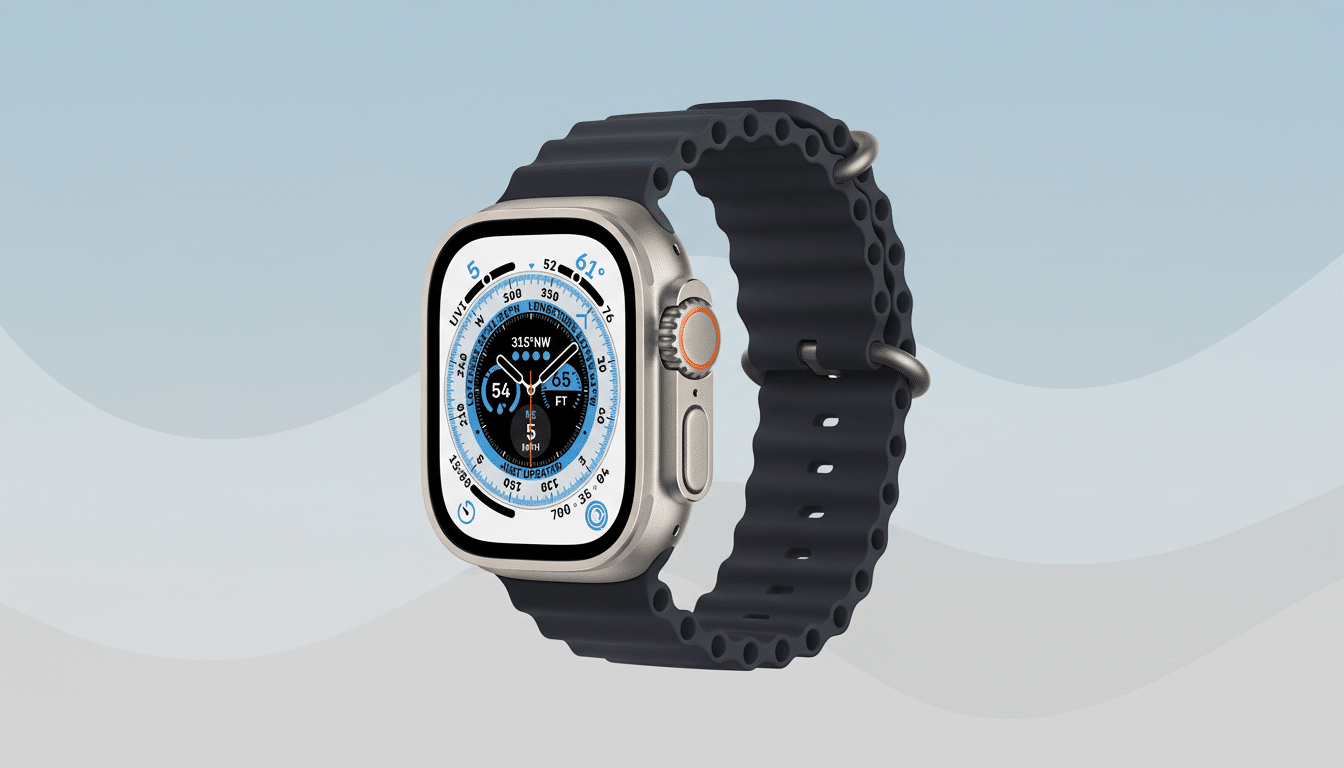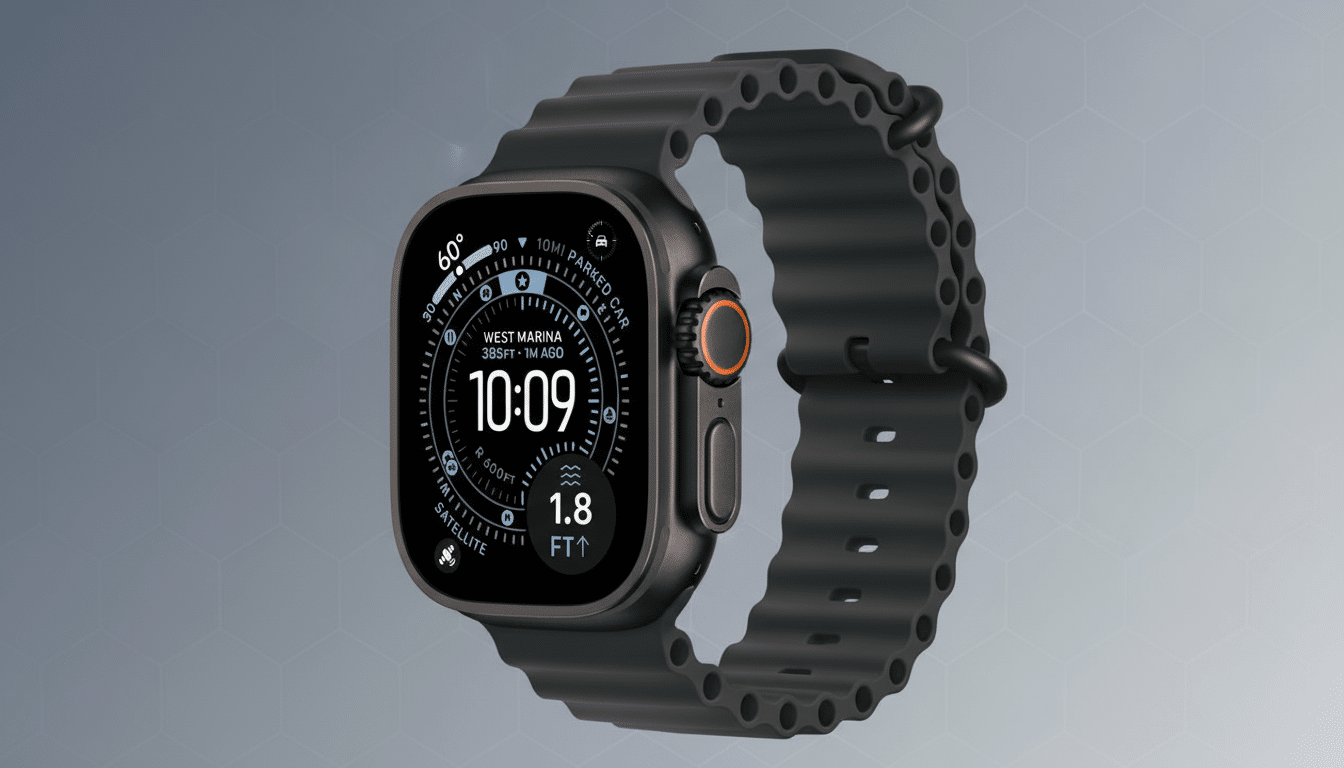Apple’s latest Watch lineup resets the materials debate. Stainless steel is retired from current Series models, and buyers now choose between aluminum and titanium for Series devices, or the Ultra family, which is titanium-only. The three metals differ in terms of durability, weight, display protection, style, and value — and one of them actually belongs on your wrist.
What changed: Before Series 10, stainless steel was the “premium” Apple Watch case, bundled with sapphire crystal and cellular; with the Series X transition and continuing into Series Y, Apple switched to aluminum and titanium for base models. The Ultra line remains titanium and is tested to MIL-STD 810H while carrying EN13319 certification for recreational diving.
- Durability and scratch resistance: case and crystal factors
- Weight, comfort and fitness: how material affects feel
- Display protection explained: Ion‑X glass versus sapphire
- Cost, value and cellular: pricing, fees and resale factors
- Style and finish considerations across aluminum and titanium
- Which Apple Watch material should you buy today?

Apple’s own tech specs separate the display cover materials: Ion‑X glass on aluminum, sapphire crystal on titanium and Ultra.
Durability and scratch resistance: case and crystal factors
Case toughness breaks down into two parts: the metal shell and the crystal on top. Aluminum is adept at handling dings but is the least resistant to cracking of these three metals and will deform under sharp impacts. Stainless steel is harder and more rigid, but as Travis said, the mirror finish made micro-scratches much more apparent in daily wear. Titanium is in the middle where we want it: strong, corrosion-resistant, and with a brushed texture that easily hides small scuffs. It also creates a passive oxide layer to resist corrosion in salty or sweaty contact, a nice touch for training and ocean swims.
The difference is even bigger on the display. Sapphire crystal (titanium and Ultra) is harder than the chemically strengthened aluminosilicate glass used for Ion‑X (aluminum), which is generally around 6–7 on the Mohs scale. In practice, keys and granite countertops are much less likely to scratch sapphire. Third-party labs and materials references consistently back up the edge that sapphire delivers, and it’s to this that luxury watches turn.
Water and dust ratings still apply to the model, not to the metal. For the recent Series, WR50 and dust resistance are standard, while Ultra models add WR100 and EN13319 depth qualification. If your training involves open-water swims, high volumes of rinsing, or sandy trails, then the package on offer with the Ultra ventures beyond simply the case material.
Weight, comfort and fitness: how material affects feel
Material density also determines how a watch feels on the wrist. On a volume basis, stainless steel is about 3x denser than aluminum and roughly 80% denser than titanium. Titanium falls in the aluminum direction in feel but is so much stronger (a part of why it’s favored in aerospace and medical implants). Whether you are tracking sleep with the watch, doing interval runs, or wearing it all day long, weight in grams counts (lighter repeaters move less on your wrist and make better contact with heart-rate sensors during high-cadence workouts).
Ultra models are larger and are in turn noticeably heavier despite being made from titanium. If you really just want the lightest Series watch possible, aluminum is still king. If you’re looking for durability but don’t want to incur a weight penalty, then titanium is the logical upgrade.
Display protection explained: Ion‑X glass versus sapphire
It’s the one that really changes what most people see. In practice, the case collects little swirls; the screen takes the beating. Sapphire’s greater hardness significantly reduces visible scratching over the long term, which is why photographers, chefs, and gym rats often note cleaner screens on their titanium or past stainless steel models when compared with aluminum. Some of the deeper impacts can still chip sapphire, but day-to-day brush-ups against rough surfaces rarely leave a mark. If you’re rough on your gear, or expect to own the watch for several years, sapphire is the long-term play.

Cost, value and cellular: pricing, fees and resale factors
On the Series devices, anticipate at least a $300 upcharge to jump from aluminum to titanium because of what’s on the case and the sapphire crystal. With older models, premium cases also come with cellular; aluminum typically comes in GPS-only or GPS+Cellular options. Keep in mind that cellular service adds a carrier fee (typically $5 to $10 per month in the U.S.), so you’ll need to budget beyond just the sticker price if you want standalone connectivity.
Resale values generally follow original MSRP and condition. Sapphire and premium‑look models lose less value, especially when the screen is flawless. If you’re the sort of person who gets a new watch every year or two, aluminum can make for a more affordable option; if you aim to keep the watch around for longer, titanium’s toughness could end up paying for itself in fewer repairs and a cleaner look as time wears on.
Style and finish considerations across aluminum and titanium
Finish is as much a determinant of perceived quality as the spec sheet. Stainless steel had a jewelry-like sheen — but drew attention to hairline scratches. Titanium’s satin finish looks premium without pretense and plays well with leather or metal bands for the dress watch, but also feels appropriate on a NATO. Aluminum colors are all matte and range from sporty to casual, doing a good job camouflaging micro-swirls (though deeper nicks will stand out more in lighter shades).
Which Apple Watch material should you buy today?
If you want Apple Watch with the same software, sensors, and speed at the lowest price, get aluminum. It’s a fine daily driver for most consumers and holds up better than you think, especially with a case or screen protector.
Opt for titanium on Series models if you really care about sapphire’s resistance to scratches, a tougher case, and a more luxurious appearance without adding too much weight. It’s the best of both worlds for active users who would like dress-ready hardware.
If you need the bigger battery, brighter screen, action button, dual-frequency GPS, and improved water resistance — features that are MIL-STD 810H validated and EN13319 certified — go with Ultra. Titanium here is part of a larger toolset designed specifically for endurance sports and travel in the great outdoors.
The short version: Aluminum gets you value and comfort; titanium puts the emphasis on durability and longevity; and while stainless steel is still available on some prior-generation watches, Apple has essentially moved past it in its forward-looking lineup.

